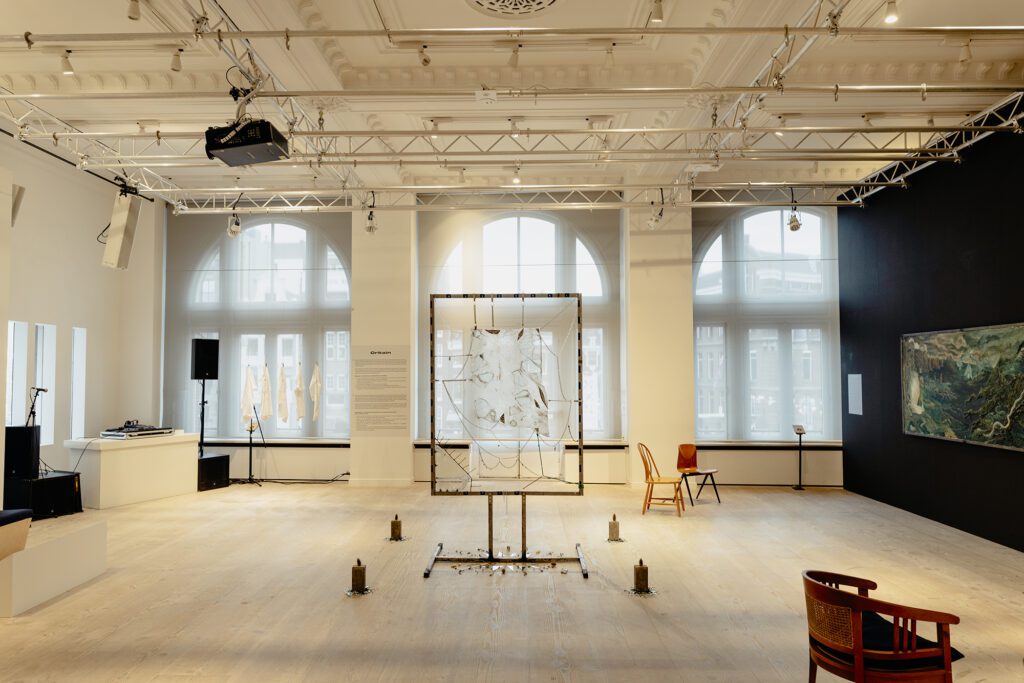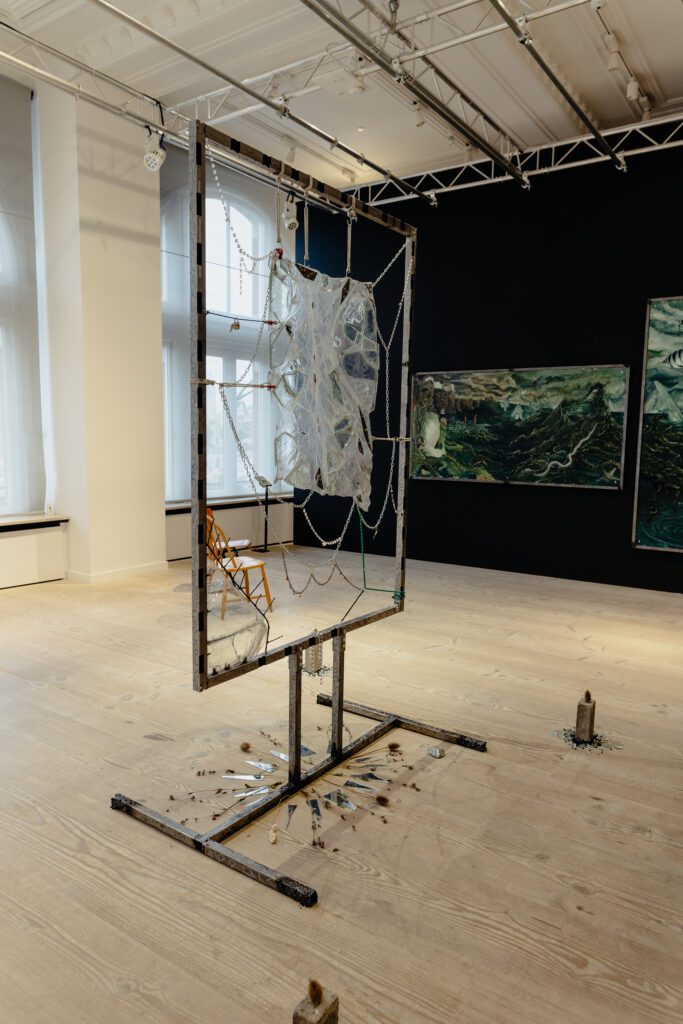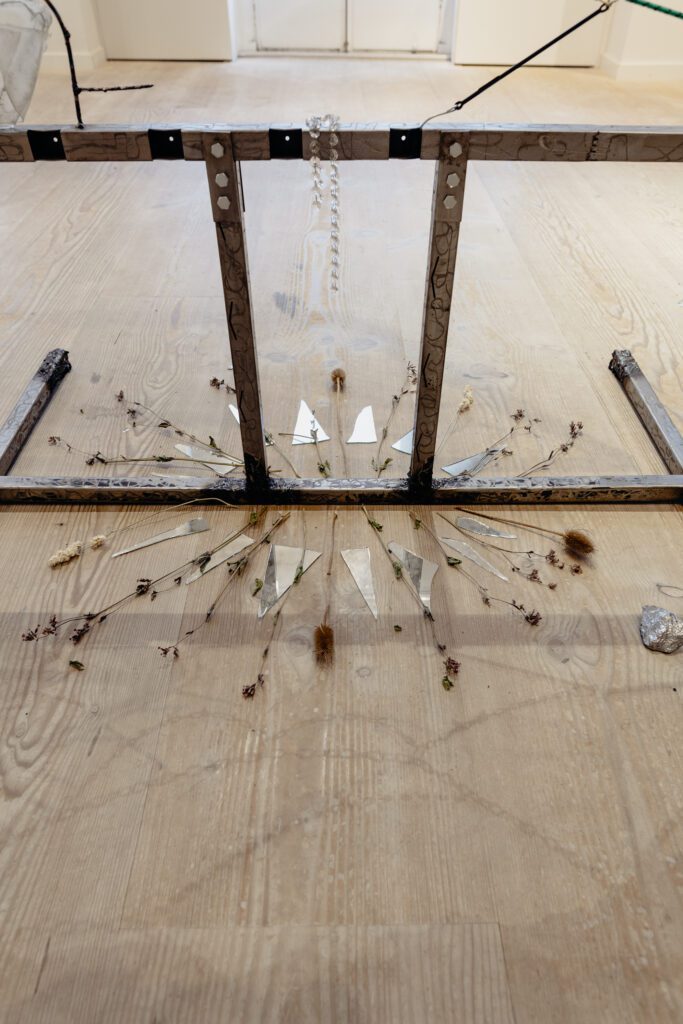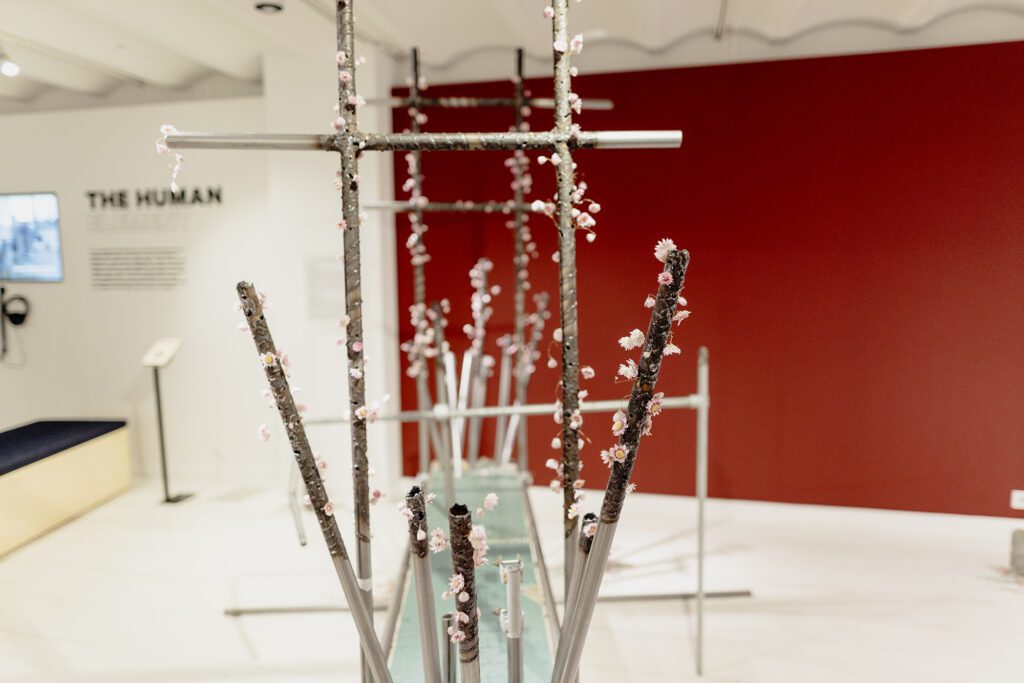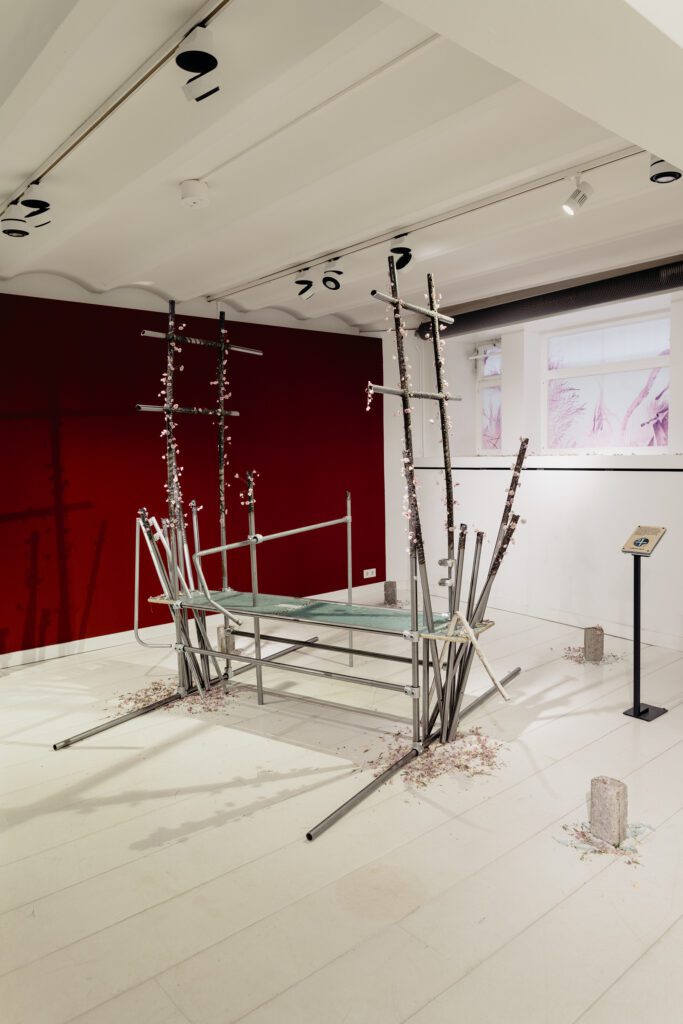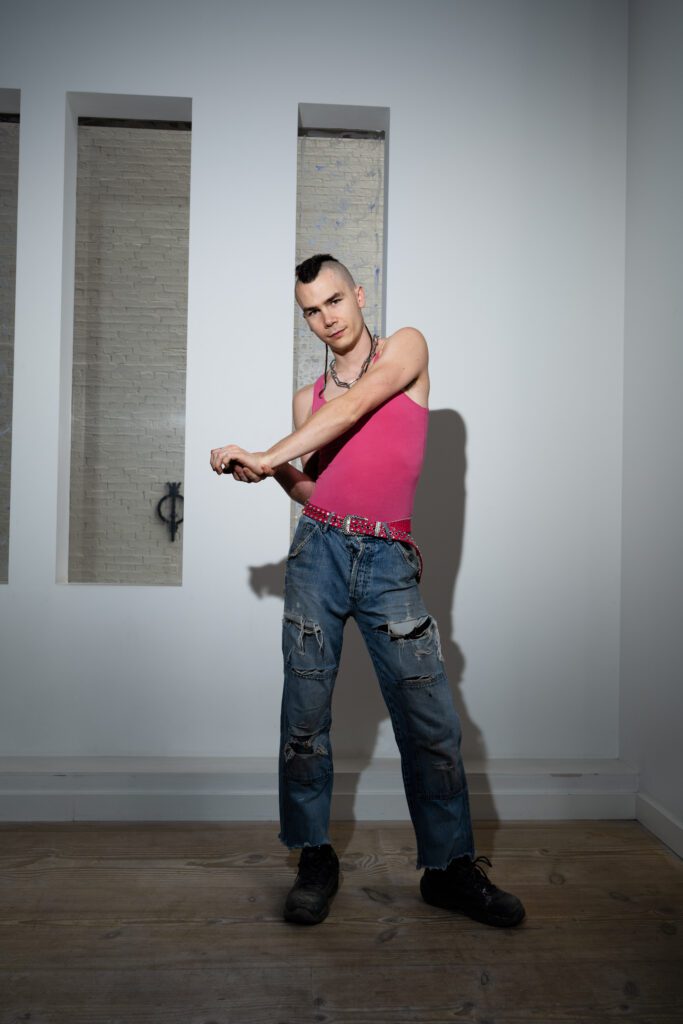Who are you and what do you love most about what you do?
Hi, I am Noah Cohen (b. Paris 1995), I am a multidisciplinary artist working mostly with sculpture, installation and video in dialogue with my environment. My work is often action based and intuitive. It involves gathering, wandering, transforming, observing and more. I like how this process helps me to navigate my surroundings differently, shaping myself as much as my urban environment. By doing so possible new spaces of freedom open up for me, both in reality and through dreams.
Which role does sustainability play within your work/practice?
Sustainability is an important part of my work. It started with the idea of DIY (Do It Yourself) as a way to build autonomy and find my own resources. For me, sustainability is also related to adaptation and transformation. How can we transform instead of destroying? I implement this notion of change in my work by trying to fix things as little as possible. The same elements could be reused very differently from one installation to another.
The new exhibition at Fashion for Good is called Knowing Cotton Otherwise. Can you tell us more about your contribution to this exhibition and what your process was like?
It was interesting to confront my sculptures (mostly made from metal and glass) with the idea of cotton. It can create an interesting contrast first, but behind the history of cotton is an industrial past with its share of the destruction of life, nature and freedom. The industrial environments where I scavenge my materials also share the same destructive history. However, how to build a newfound freedom from the ashes of this past is interesting to me. How to reinvent not by destroying again but by transforming with its own elements.
What do you hope for people to take away after seeing your work in the museum?
I like to create contrast in my work. It seems to me that we live in a world of contrasts, sometimes even paradoxes. But I think instead of opposing themselves, those contrasts can be fertile. Between two contrasting elements or feelings you can have a whole world flourishing, with all emotions possible. I would like for people to see this interaction with my work as an encounter with a living thing to hopefully find a way to connect with the pieces.
The exhibition Knowing Cotton Otherwise is based on collectivity and community. Why is a community-driven mindset that strives for collectivity important to you?
As I am working with the idea of an urban ecosystem and my interactions with it, the notion of collectivity is important. The idea of an ecosystem is that it works together as a whole. Even an individual act can have a collective impact. I like to imagine that working closely with my environment helps me build empathy and collectivity. Imagination can also be a collective process to build the real.
You work with materials that you find. What makes you most excited about creating something new with already existing objects and materials?
I imagine my process of work as a conversation with my environment, and I like to be surprised by what this interaction can bring to me and what different experiences it can provide. For me, those experiences are as valuable as the possible outcome. It is a moment of sharing and almost like a symbiosis.
I also like the fact that objects or materials that I found have a past, a previous function they freed themselves from, and by helping them transform I also change my experience with this object and its surroundings.
